Crucible for melting aluminum includes high temperature resistance, chemical stability, corrosion resistance and others.
Crucibles for melting aluminum usually made of alumina, graphite or ceramic materials because of their excellent high temperature resistance, chemical stability and corrosion resistance.
For special needs, there can use such as high-purity metal production or portable melting, cold crucible melting technology or tilting crucible furnaces .
At the same time, considering the economy and environmental protection, alternative fuels such as rice husk pellets may also be a viable option.
Crucibles for melting aluminum need to have the following characteristics and material selection:
High temperature resistance
The melting point of aluminum is 660°C, so the crucible material must be able to withstand high temperatures. Alumina crucibles widely use because of their high temperature resistance (up to 1500°C).
In addition, graphite crucibles and porcelain crucibles also show good stability at high temperatures and will not dissolve in molten aluminum.
Graphite (graphite crucible)
- Temperature: 3000°C and above
- Advantage: Fast thermal conductivity, strong thermal shock, chemically inert (under inert or reducing atmosphere).
- Application: Small/medium resistance furnaces, induction furnaces, laboratory melting.
High aluminum oxide (high aluminum crucible)
- Temperature: 1750 °C
- Advantage: Extremely corrosion-resistant, usable in both oxidizing and reducing atmospheres, and resistant to alkaline fluxes
- Application: Aluminum alloy or glass melting that requires extremely high purity and strict oxidation requirements
Silicon Carbon (SiC) Crucible
- Temperature: About 1700°C (the actual operating temperature is slightly lower than graphite)
- High hardness, wear resistance, and chemical corrosion resistance
- Application: Aluminum scrap or alloy melting that requires wear resistance and low oxidation requirements
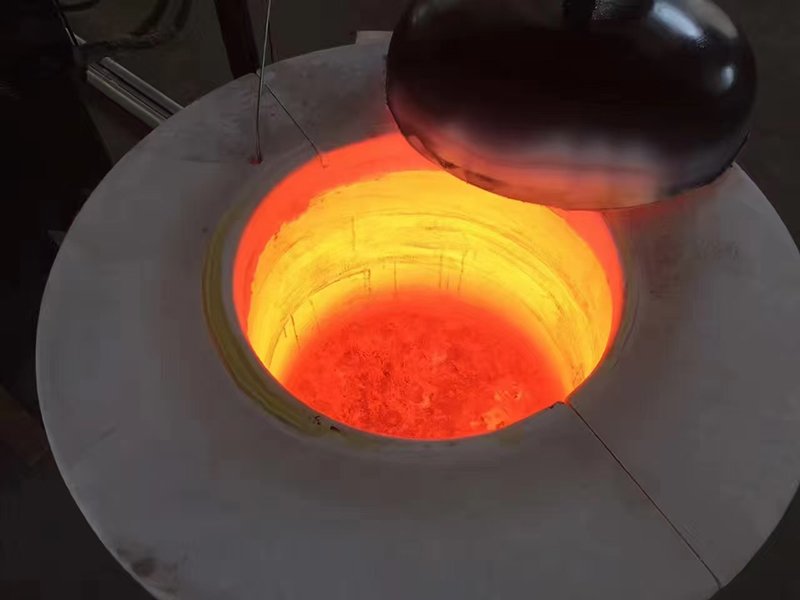
Chemical stability
The crucible material should not react chemically with molten aluminum. Alumina crucibles are recommended for aluminum smelting due to their chemical inertness.
In addition, graphite crucibles and ceramic crucibles have also been shown to have good chemical stability at high temperatures.
Graphite
Chemical stability performance:
- In pure aluminum or common alloys, it essentially does not react with aluminum, maintaining the purity of the melt.
- However, in the presence of fluorides, cyanides, or other fluxes (such as cryolite), aluminum reacts with graphite to form aluminum carbide (Al₄C₃), causing corrosion.
Al₂O₃
Chemical stability performance:
- As a ceramic material, it is extremely chemically inert, barely reacting with molten aluminum and maintaining its structural integrity at temperatures exceeding 1700°C.
- It also remains stable in oxidizing and reducing atmospheres.
SiC
Chemical stability performance:
- It is basically inert to aluminum at high temperatures and is often used as the lining material for corrosion-resistant crucibles.
- Silicon itself forms a SiC layer with graphite. But its direct chemical effect on aluminum is minimal.
- And it belongs to the category of “chemical stability”.
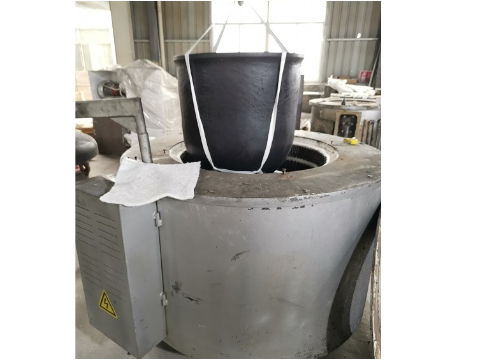
Corrosion resistance
Aluminum liquid is highly corrosive, especially to iron crucibles. Studies have shown that iron crucibles are prone to “waist drum” deformation, peeling, or even cracking when smelting aluminum.
And the iron content in the aluminum liquid will increase significantly.
Therefore, iron crucibles are not suitable for aluminum smelting.

Mechanical strength
The crucible needs to have sufficient mechanical strength to prevent damage under high temperature and high pressure.
Alumina crucibles widely use due to their high hardness and heat resistance. In addition, low alloy cast iron crucibles containing elements such as Cr and Re also show excellent anti-growth and anti-oxidation properties.
Economical and alternative materials
For cost-sensitive applications, alternative materials can be considered.
For example, rice husk pellets use as a fuel substitute in Nigeria for aluminum smelting. Although they mainly use for lead, zinc and aluminum, their environmental and economical performance may be of reference value for some applications.
In addition, BN and TiB2 compounds in evaporation dish waste have also been proposed as alternatives to refractory materials.
Special design requirements
For industrial applications, cold crucible melting (CCF) use to produce high purity metals. This technology protects the crucible with a water-cooled wall, preventing the molten metal from coming into contact with the crucible, thus avoiding contamination.
In addition, tilting crucible furnaces have also been designed for portable aluminum melting.
Environmental protection and sustainability
Using environmentally friendly materials and reducing pollution are important goals of modern industry.
For example, rice husk pellets as a fuel substitute not only reduce environmental pollution, but also reduce energy costs.
Haichen die casting machine
Haichen is one Chinese die casting machine manufacturer for more than 10years. At the same time, we produce both high pressure cold chamber die casting machine , hot chamber die casting machine and spare parts. They have durable and highly precise features.
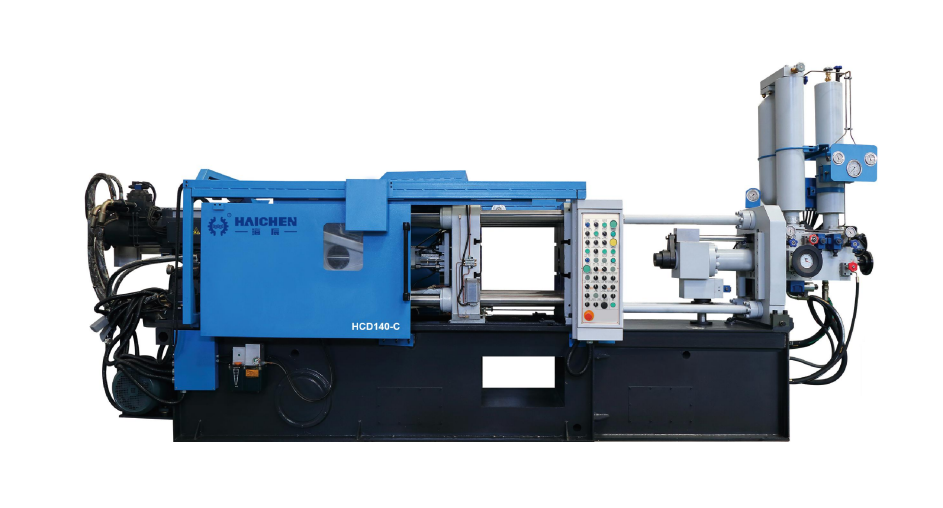
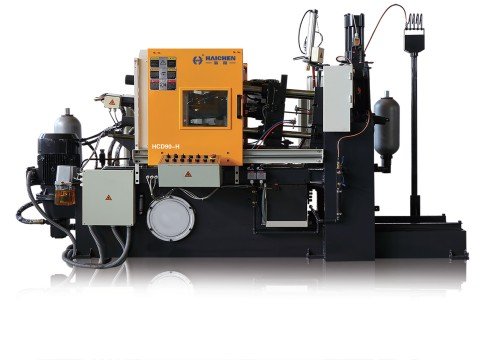
Haichen also produce die casting machine auxiliary equipment. Such as conveyor, vacuum machine, mold temperature controller, industrial robot, sprayer and so on.
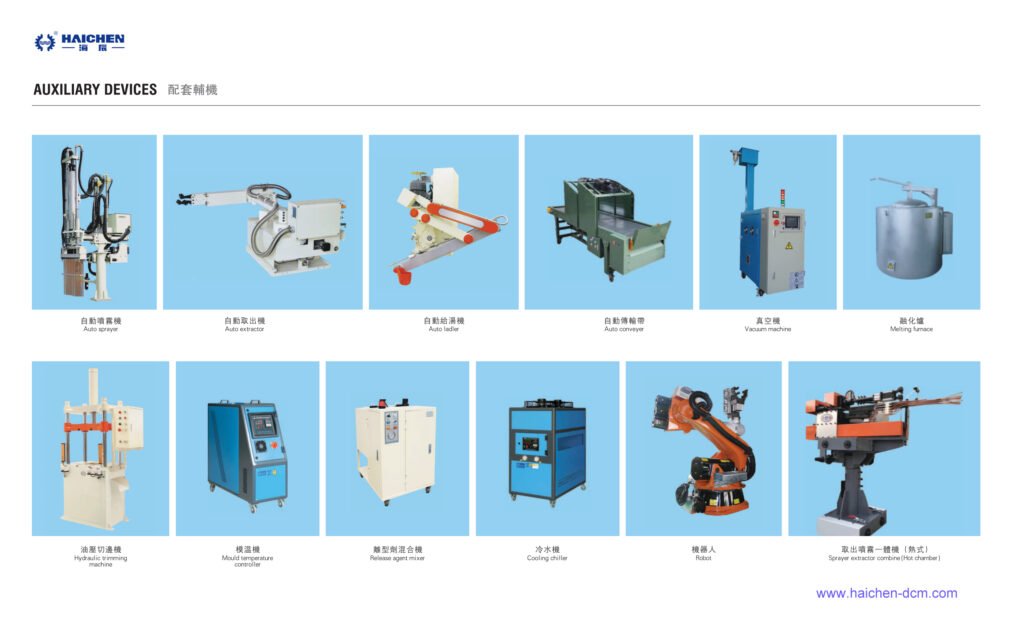
We supply cold chamber and hot chamber die casting machine spare parts.
Welcome contact us.



